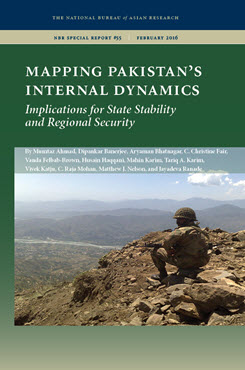Mapping Pakistan's Political Superstructure
This essay examines both the pivotal institutional structures of the Pakistani state and the current dynamics of national political processes, with a view to evaluate the country’s capabilities to address internal and external security issues.
EXECUTIVE SUMMARY
Main Arguments
Notwithstanding the long history of political crises and religious, sectarian, and ethnic conflicts, Pakistan has more than muddled through numerous crises and upheavals despite structural weaknesses of state and governmental institutions. This is largely thanks to the military and the civil bureaucracy. Both during military dictatorships and civilian governments, these two “superstructures” of the state have ensured that borders are secure, insurgencies do not threaten the state’s very existence, nuclear assets are safe and secure, law and order is maintained—howsoever inadequately—and the day-to-day business of the government continues to be performed. The pivotal institutions of the state—the parliament, civil bureaucracy, the military, paramilitary outfits, intelligence agencies, the judiciary, police, and provincial and local governments—do face multiple challenges and inadequacies in terms of institutional capacity, resources, sophistication, and operating procedures. Yet despite the enormity and multiplicity of threats to internal security, they have been able to steer through crises and avert a major catastrophic situation that threatens Pakistan’s integrity and legitimacy.
POLICY IMPLICATIONS
- All relevant stakeholders—both domestic and international—that are concerned about the threats to the peace and stability of Pakistan should support new policy reforms (legal, institutional, socioeconomic, and educational), while also working to address the socioeconomic, political, and religious and ideological conditions that give rise to extremism and militancy.
- The foremost task to ensure Pakistan’s internal security and to deal with militancy is to enhance the capacity of the state’s institutional structures—especially the civil bureaucracy, the judiciary, and law-enforcement agencies—through organizational reforms and technical support.
- The convergence of two recent developments—massive military operations against the militants in the Federally Administered Tribal Areas and the consensus among major political parties and civil society activists that extremism and militancy are the most imminent threats to Pakistan’s security—calls for a deeper commitment by the international community to strengthen these trends through a package of incentives.
Mumtaz Ahmad is Executive Director of the Iqbal International Institute for Research and Dialogue at the International Islamic University in Islamabad.


